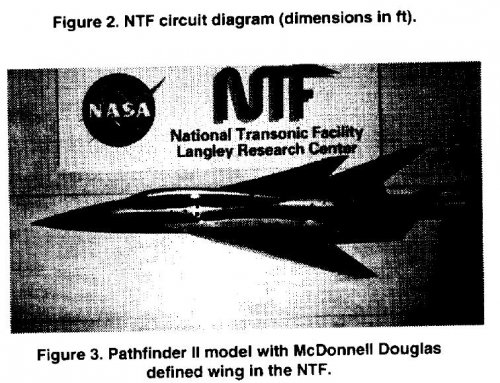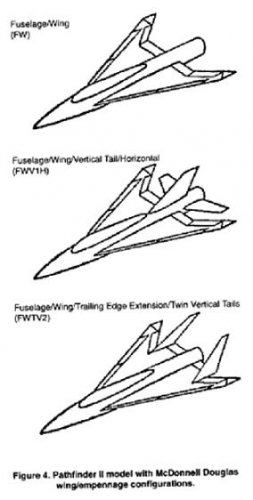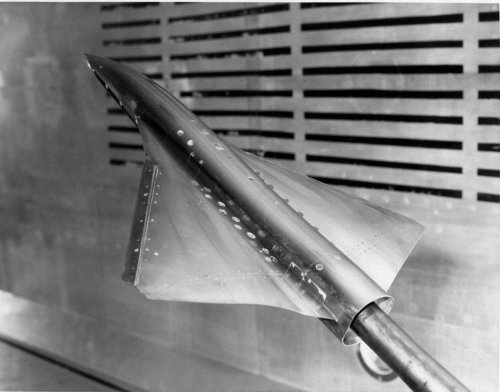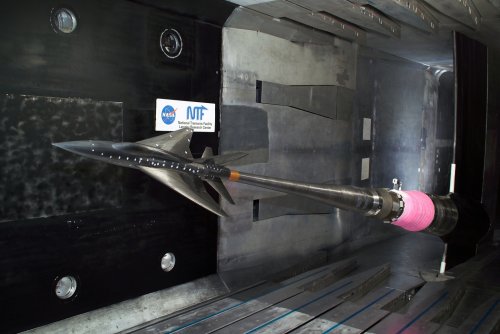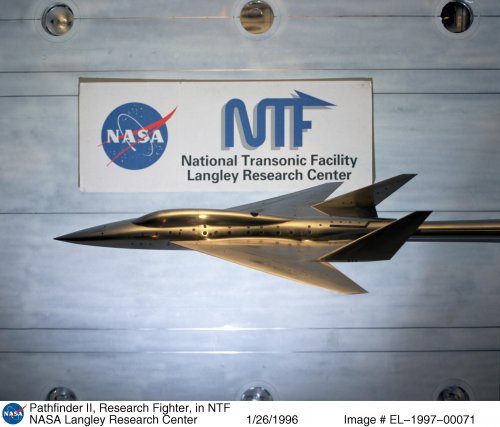You are using an out of date browser. It may not display this or other websites correctly.
You should upgrade or use an alternative browser.
You should upgrade or use an alternative browser.
NASA Pathfinder II Research Fighter Model
- Thread starter hesham
- Start date
- Joined
- 1 April 2006
- Messages
- 11,397
- Reaction score
- 10,313
Similar to the Pathfinder I configurations for subsonic transports, a Pathfinder II series of relevant, yet generic fighter configurations were defined collaboratively with industry during the 1980s. The configurations associated with General Dynamics and McDonnell Douglas were tested. The General Dynamics configuration included a conventional forebody, an advanced moderately swept wing, and the capability for parametric variation of leading- and trailing-edge devices; test conditions included Mach numbers from 0.4 to 0.95, angles of attack up to 33 deg, and a maximum Reynolds number of 66 million.
The McDonnell Douglas configuration included a conventional forebody, an advanced wing, and a variety of empennage components enabling investigation of singe- and twin-tail configurations.
Test conditions included Mach numbers of 0.6, 0.8, and 0.9 at angles of attack up to 18 deg with chord Reynolds numbers up to 61 million.
Additionally, the McDonnell Douglas Pathfinder II configuration was tested at sideslip angles up to 10 deg. Aside from the HSR Reference H configuration, this configuration has the most extensive lateral/directional database at high Reynolds numbers.
MDC Pathfinder II
This configuration was developed jointly with McDonnell Douglas Corporation (St. Louis, MO.), now Boeing. The model had a conventional (smooth-sided) forebody, an advanced cambered transonic wing, and a variety of empennage components. This model was also designed for cryogenic testing.
Tests were performed in the NTF in the fall of 1995. The purpose of the test was to provide a full-scale Reynolds number data base and Reynolds number increments applicable to thinwing, fighter-type configurations. Data were obtained from M=0.60 to 0.90 and Rnc from 5 to 61 million (flight) at angles of attack from -2° to 18°.
Attachments
Similar threads
-
Northrop N-309 - NASA V/STOL jet operations research aircraft
- Started by overscan (PaulMM)
- Replies: 4
-
-
RSRA (Rotor Systems Research Aircraft) projects
- Started by hesham
- Replies: 24
-
-
Boeing Model 759-182A & Model 759-214A
- Started by hesham
- Replies: 2

